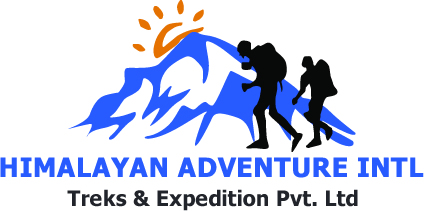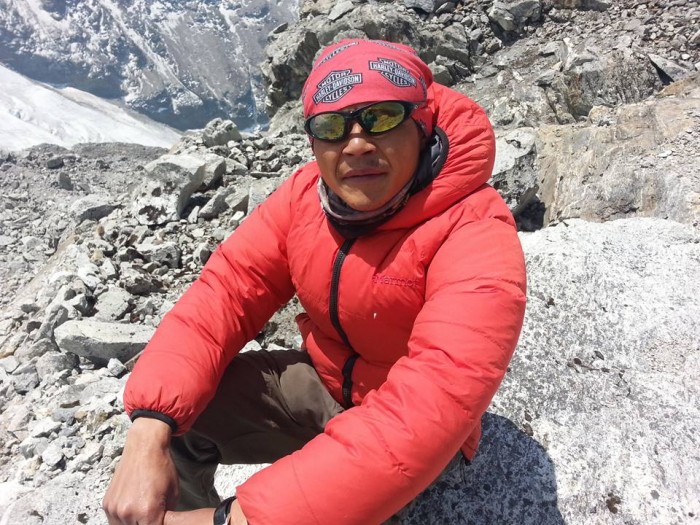The Great Himalayan Trail (GHT) is a dream trek for adventurers seeking the ultimate trekking challenge in Nepal. Spanning from the eastern to the western region, the full distance of the GHT covers some of the most remote and breathtaking landscapes of the Nepalese Himalayas. With diverse terrains, cultural encounters, and majestic mountain views, the GHT offers an unforgettable experience for trekkers. In this detailed guide, we will cover everything you need to know about the Great Himalayan Trail Trekking package, including costs, equipment, permits, guide hiring, and more, ensuring a successful adventure with Himalayan Adventure Intl Treks.
Overview of the Great Himalayan Trail Trek
The GHT stretches over 1,700 kilometers across the eastern and western regions of Nepal, passing through lush forests, arid landscapes, deep gorges, high passes, and hidden valleys. It is divided into two routes:
- High Route: This is the more challenging and adventurous path, crossing high mountain passes above 5,000 meters.
- Low Route: This trail passes through mid-hill regions, offering cultural experiences in traditional villages.
The trek takes around 120 to 150 days depending on the pace, route, and side trips you include.
Cost of Great Himalayan Trail Trek Package
The cost of the GHT trek varies depending on services, season, and group size. Here is a breakdown of the general costs:
-
Guide Hiring Cost: Hiring a professional guide for the Great Himalayan Trail trek is essential for navigation, safety, and local knowledge. A guide costs around $30 to $50 per day depending on their experience and qualifications. For an extended trek like GHT, you may negotiate a package deal.
-
Porter Cost: Porters are invaluable on long treks, helping carry your equipment so you can focus on the trek. Porter's costs are around $20 to $30 per day. One porter usually carries around 20-25kg of equipment.
-
Trekking Package Cost: A full-service GHT trekking package, including guides, permits, food, accommodation, and transportation, can range from $12,000 to $18,000. This price depends on your specific itinerary, group size, and the level of services required.
-
Transportation Cost: The GHT trek requires multiple internal flights and ground transportation. For example, a flight from Kathmandu to Taplejung (the starting point for the eastern region) or Jumla (the western region) costs around $200 to $300 per person. Ground transportation (jeeps, buses) can range from $50 to $150 depending on the route.
Necessary Equipment for the Great Himalayan Trail
A trek as demanding as the GHT requires proper equipment to ensure safety and comfort. Here's a list of essential gear:
- Trekking boots (high-quality, waterproof)
- Layered clothing (base layers, mid-layers, and outer layers)
- Down jacket (for cold weather)
- Sleeping bag (rated for -20°C)
- Trekking poles
- Water purification system
- First-aid kit (including high-altitude medicine)
- Sunglasses and sunscreen
- Trekking backpack (60-70 liters)
- Map, compass, or GPS device
- Camping equipment (if camping is part of your itinerary)
Permit Cost for the Great Himalayan Trail
The GHT crosses several restricted and protected areas that require multiple trekking permits, including:
- TIMS Card: Trekkers Information Management System (TIMS) costs $20 per person.
- National Park Permits: These include Sagarmatha, Langtang, and Shey Phoksundo National Parks, which charge $30 to $50 per park.
- Restricted Area Permits: For regions like Manaslu, Dolpo, and Upper Mustang, permit fees vary between $100 and $500, depending on the duration and area.
Booking Your Great Himalayan Trail Trek
Booking your GHT trek through a reputable company is essential for a smooth and safe journey. Himalayan Adventure Intl Treks is an experienced organizer of GHT treks and offers comprehensive services including guide and porter hire, accommodation, food, and permits.
To book your trek:
Contact Himalayan Adventure Intl Treks through their website or office.
Submit necessary documents: Passport, passport-sized photos, insurance information, and personal details.
Make the necessary deposit: A non-refundable deposit is usually required to secure your spot, typically 25% of the total package cost.
Plan your itinerary: Customize your trek based on your interests and fitness level.
Food and Accommodation Costs
While trekking the GHT, you will stay in a mix of teahouses, homestays, and tents. In remote areas, accommodation is basic but clean and comfortable. The cost for accommodation in teahouses ranges from $5 to $15 per night, while camping can be more cost-effective if arranged in advance. Meals typically cost between $5 to $10 per meal, depending on the region. Expect prices to rise in more remote areas.
Documents Required for Great Himalayan Trail Trek Booking
To book the GHT trek, you will need:
- A valid passport (with at least six months validity)
- Passport-sized photos for permits
- A comprehensive travel insurance policy covering high-altitude trekking and helicopter evacuation
- Permits for restricted areas and national parks (arranged by your trekking company)
Best Time for the Great Himalayan Trail Trek
The ideal time to embark on the Great Himalayan Trail trek is during the spring (March to May) and autumn (September to November) seasons. These months offer stable weather, clear skies, and mild temperatures. Monsoon season (June to August) and winter (December to February) present challenges such as heavy rainfall, landslides, snow, and blocked trails.
Altitude Sickness (AMS) and Prevention
Altitude sickness is a serious concern on the Great Himalayan Trail, with many high passes exceeding 5,000 meters. To prevent AMS:
- Acclimatize gradually: Take rest days to allow your body to adjust.
- Hydrate regularly: Drink plenty of water.
- Descend if symptoms worsen: Headaches, dizziness, and nausea are early signs of AMS.
- Carry medication: Diamox can help with acclimatization, but always consult with your guide or a doctor before taking it.
Duration of the Great Himalayan Trail Trek
The complete trek takes about 120 to 150 days to complete, depending on your pace, weather conditions, and side trips. Many trekkers break it up into sections to be completed over several years.
Why Choose Himalayan Adventure Intl Treks
Himalayan Adventure Intl Treks offers professional and personalized trekking experiences on the Great Himalayan Trail. With expert guides, top-notch logistics, and a deep understanding of the regions, we ensure your GHT trek is safe and memorable. Our team arranges all permits, transportation, food, and accommodations, allowing you to focus on the adventure.
Contact us today to start planning your Great Himalayan Trail Trek and embark on the adventure of a lifetime across the majestic Himalayas!
This comprehensive guide to the Great Himalayan Trail covers all the essential aspects to ensure a successful and unforgettable trekking experience with Himalayan Adventure Intl Treks.

 Plan Your Trip Now
Plan Your Trip Now 


